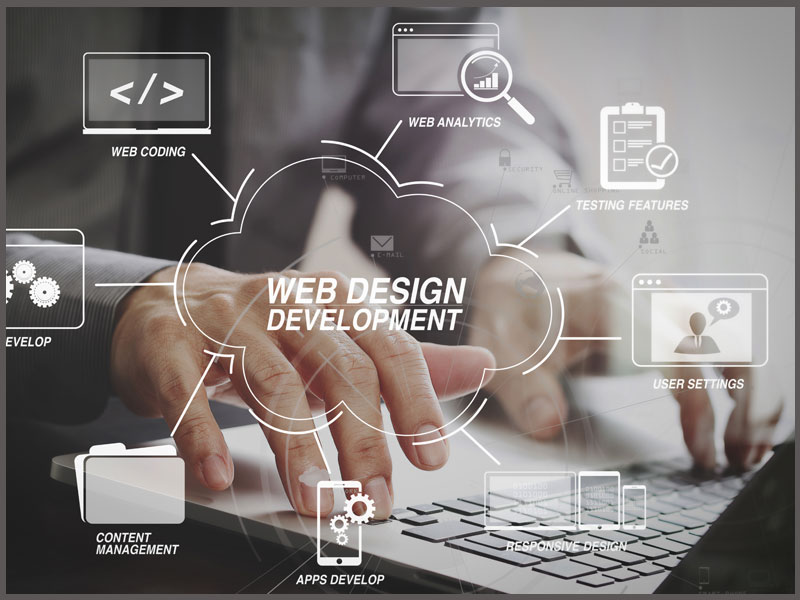The Very Best Sorts Of Website Design to Improve User Experience and Engagement
In the ever-evolving landscape of electronic interaction, the effectiveness of Web layout dramatically impacts user experience and interaction. Numerous layout methods, such as minimalist, responsive, and interactive formats, each offer one-of-a-kind benefits that can provide to varied individual needs.
Minimal Website Design
As digital landscapes come to be increasingly cluttered, minimal Web style has actually become an effective approach to boosting user experience. This layout ideology focuses on simplicity, concentrating on necessary aspects while eliminating unnecessary diversions. By using enough white space, simple navigating, and a limited shade palette, minimal layout promotes clarity and directs user focus to crucial material.
The core principle of minimal Web design is to create a seamless interaction for individuals. By decreasing cognitive tons, users can swiftly comprehend info without feeling bewildered. This direct technique not just improves usability but additionally motivates involvement, as visitors are most likely to check out a website that is simple and aesthetically appealing to browse.
In addition, minimal design typically highlights typography and images, making use of these elements strategically to communicate messages efficiently. In essence, minimal Web design is not simply a trend; it is a thoughtful approach that recognizes the relevance of user-centered style.
Receptive Web Layout
In today's varied electronic environment, receptive Web style has actually come to be important for creating a seamless customer experience throughout a multitude of tools. As individuals accessibility websites on mobile phones, tablets, laptops, and desktop computers, the capacity of an internet site to adapt its format and content to various screen sizes and resolutions is critical.
Receptive website design utilizes adaptable grids, pictures, and CSS media questions to make certain that Web material is presented optimally, no matter of the device made use of. This method not just enhances the visual appeal of an internet site however also considerably improves use. Customers are much more most likely to involve with a site that offers a consistent experience, as it gets rid of the disappointment of having to zoom in or scroll exceedingly.
By taking on receptive layout, companies can boost their exposure and reach a more comprehensive target market. In summary, receptive Web design is a fundamental technique that enhances individual experience, interaction, and general satisfaction.
Interactive Web Design
Receptive website design lays the foundation for boosting individual experience, however interactive Web style takes this a step additionally by involving users in an extra vibrant method - Aligned Position Web Design. By integrating components such as computer animations, clickable models, and real-time feedback, interactive Web layout captivates individuals, attracting them into a richer surfing experience
This method not only cultivates interaction but additionally urges users to check out material proactively instead of passively consuming it. Strategies such as gamification, where individuals gain incentives for finishing jobs, can significantly look at more info improve the time invested on a site and boost total contentment. Interactive attributes can streamline intricate information, making it extra digestible and enjoyable.

Including interactive design elements can additionally bring about greater conversion rates, as users are extra most likely to engage with a site that actively involves them. Aligned Position Web Design. Inevitably, interactive website design changes individual experiences right into remarkable trips, making certain that site visitors return time after time
Apartment Style
Identified by its minimalistic technique, level style emphasizes simpleness and capability, stripping away unneeded components and concentrating on important features. This design ideology focuses on usability, making sure that customers can navigate interfaces effortlessly and performance. By utilizing a clean aesthetic, level layout removes the clutter often discovered in extra elaborate styles, thereby enhancing individual concentrate on web content and capability.
The trademark of level design depends on its usage of vibrant shades, straightforward typography, and geometric forms. These elements contribute to an aesthetically appealing user interface that is both approachable and modern-day. In addition, level layout promotes a feeling of quality, enabling users to determine essential actions and information without disturbance.
Furthermore, flat layout is particularly reliable in responsive Web design, as its simplicity converts well across numerous devices and display sizes. By concentrating on important attributes, flat style not only satisfies individual requirements however likewise encourages seamless interaction, making it an important element of effective Web style approaches.
Flexible Website Design
Adaptive Web style personalizes the customer experience by producing several fixed layouts tailored to various screen sizes and gadgets. Unlike responsive design, which fluidly adjusts a single design, flexible have a peek at this website design employs distinctive formats for details breakpoints, making certain ideal presentation on different platforms. This approach enables designers to concentrate on the distinct characteristics of each gadget, enhancing functionality by delivering precisely what customers need based upon their context.
One of the primary benefits of adaptive website design is its capability to maximize load times and performance. By serving customized web content and photos that fit the wikipedia reference individual's tool, internet sites can minimize data usage and boost loading rates. This is specifically advantageous for users with slower links or restricted data strategies.

Furthermore, flexible layout helps with a more regulated and regular branding experience. Because developers create several formats, they can make sure that the visual aspects line up with the brand's identity across various systems - Aligned Position Web Design. This results in a cohesive individual experience, boosting engagement and advertising individual retention
Final Thought
In verdict, the integration of minimalist, receptive, and interactive website design principles substantially enhances customer experience and involvement. Minimal style promotes clarity and emphasis, while receptive style ensures versatility across various tools, promoting ease of access. Interactive design astounds customers with dynamic aspects, urging exploration and customization. Jointly, these design approaches add to the production of straightforward environments that not only boost complete satisfaction but likewise drive greater conversion rates, underscoring their essential importance in contemporary Web layout techniques.

Minimal layout cultivates quality and emphasis, while receptive design ensures versatility throughout various tools, advertising availability. Jointly, these design approaches add to the creation of user-friendly environments that not only improve fulfillment yet also drive greater conversion rates, emphasizing their important significance in contemporary Web style techniques.